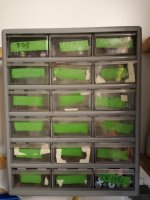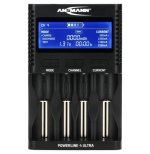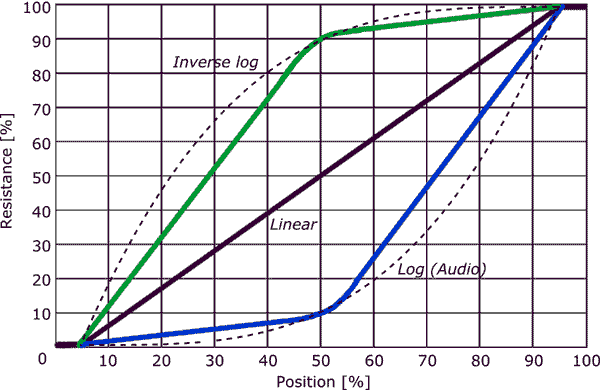Wonder if I should use more than one battery charger since I’m building this pack with 300+ cells. Seems like it would take forever to fully charge all cells with just one charger that has slots of 4 cells?
That depends on how much you want to invest, in both time and money.
Here's a scenario. You have 300 cells. The capacity tester can fully charge 4 at a time. Assume 3000mah cells, and you only want to deal with this during waking hours (good idea for safety anyway). Test at 1000ma per cell. That means 4 cells get fully charged in 3 hours (maybe less, since you bought them probably at storage, 50% capacity, but call it 3 hours anyway). That means you can charge 16 per 12 hour day. 16 fully charged cells per day, put them in a container, mark it with the date. Next day, same thing, charge 16 cells, place them in a box, date it, store it
under the previous days box. See where this is going?

Here's an example of what you could use to sort each day's cells and keep them organized.
19 days later, you'll have all your cells fully charged. Open the box from day 1, check for self discharge. Set aside any cells lower than 4.1v (or whatever you decide your cutoff is). Start a capacity test now for each cell. This will take 2x as long as simple charging: you're starting with a full cell, discharge 100 percent, charge to at least 50%. This is the other reason why I try to catch them when charging after the capacity test is complete, it frees up a slot in the charger for the next cell to test. Sharpie the capacity result on the cell, set aside in groups of 50mAh. This will take longer than 12 hours per 16 cells. When you've finished capacity testing all the cells from day 1, one day will have passed, and you'll be able to check for self-discharging cells from day 2. Continue until the remains of the deceased horse are well and truly beaten.
So perhaps 30 days. Plus the first charge of 19 days, means you can finish testing 300 cells in 50 days on one charge. If you get 2 chargers, you could finish in half of the time. Maybe that's worth another 50 bucks to you. But if you get 3 chargers, keep in mind that even though the first charge for self-discharge test will get done in 3-4 days, you still have to wait 7-30 days anyway. And when you get to capacity testing, when it comes to time investment, you start to run into diminishing returns, as you only have so much time per day to babysit the chargers and switch them out for the next cell, I'm sure you have other things going on in your life. Consider that you're building an e-vehicle, so maybe you can get just 1-2 chargers and use the downtime to work on the other parts of your build.
When do you perform the IR test? Up to to you. I know recyclers who perform an IR test first and foremost, before ever checking voltage. They immediately discard/recycle cells that have high IR, because IR is an excellent test to give you an idea of general cell health before you even do a capacity or voltage test, so they don't want to waste time or energy bothering with a self-discharge check or capacity test on a cell that's unlikely to pass anyway. My opinion is to perform the IR test after a capacity test. If the IR result is high, mark it with IR next to capacity, and set it aside for a powerbank, flashlight, laser pointer, ect., something low draw that doesn't have a high-amp requirement. If it's really bad, and a no-capacity cell, save them for spot welding practice and settings.
I recover and test used and recycles laptop batteries. I have 1 opus and 3 Liitokalas, and sometimes it's great to have 4, if I have hundreds of cells to process, but I could exercise a bit more patience and get by with 2. I also have 3-4 various semi-homemade testers and dischargers, for manual testing or testing of unusual sized cells.

I parallel 40 cells and hook them all up to 1ea TP4056 module, this super super slowly charges low-voltage cells for gentle recovery. I use the same 40 cell holder, attached to resistors, to discharge and balance 40 cells at a time.





